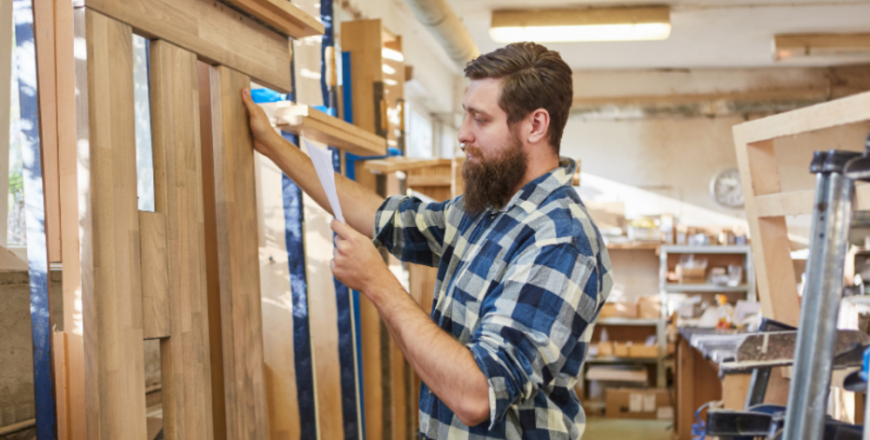
On a furniture manufacturer apprenticeship course, you’ll help make all kinds of beds, furniture, and related furnishings in a workshop or factory.
Any furniture manufacturer must be able to meet agreed-upon production and quality criteria. Workplaces range from small workshops to large enterprises.
As a furniture manufacturer, you must be dexterous, have a strong work ethic, and work alone and as part of a team.
This apprenticeship covers general furniture, beds, upholstering, finishing, installing, repair, foam conversion, upholstery cushion interiors, wood machinery, and computer numerical control.
The apprenticeship course provides a broad range of skills relevant to the industry’s various occupations. An upholsterer, for example, will produce aesthetically appealing and practical consumer products by blending old and new procedures, materials, and fabrics. A furniture finisher prepares and treats a wide range of hardwoods and engineered woods.
What you’ll learn
On a furniture manufacturer apprenticeship course, you’ll learn to:
- Install and use furniture-making machinery, tools, and equipment.
- Produce furniture components that meet requirements while remaining within acceptable tolerances.
- Recognise how and where different parts are used.
- Use equipment to cut materials within acceptable tolerances.
- Learn about the many types of joints used in the building of handmade furniture.
- Select, prepare, and apply veneers to furniture.
- Assemble furniture parts. Learn about the assembly sequence and why it is so important.
- Sand materials before assembly, after assembly, and before de-nibbing. Find out more about grit sizes and the sanding process.
- Prepare and assemble components according to specifications, then finish and verify the assembly to confirm compliance.
- Adhere the pieces together using adhesives. Understand the various types, methods, and processes used in glueing.
- Use and maintain jigs and templates for furniture production. Jigs are used in the production of furniture to ensure repeatability and accuracy. These may be held in hand or installed on workbenches.
- Execute the edge-banding method in line with standard operating procedures.
- Edge banding is applying a trim or edge to a piece of furniture to make it neater and aesthetically appealing.
- Correct or revise the work. This includes checking and repairing equipment.
Entry requirements
You’ll usually need:
- Depending on the employer, but likely GCSEs or equivalent qualifications or relevant experience.
- Apprentices without level 2 English and maths will need to achieve this level before taking the end-point assessment.
Assessment methods
The End Point Assessment comprises three distinct assessment methods:
- Portfolio of Work
- Knowledge Tests
- Observation
Duration, length, subjects and potential salary upon completion
- Duration: 24 months
-
Level: 2 – Intermediate Apprenticeship
- Relevant school subjects: DT and art
- Potential salary upon completion: £21,000 per annum
Apprenticeship standard
More information about the Level 2 Furniture Manufacturer Apprenticeship standard can be found here.
Apprenticeship end point assessment
For more information about the End Point Assessment Process, please read the Institute of Apprenticeships’ information page
